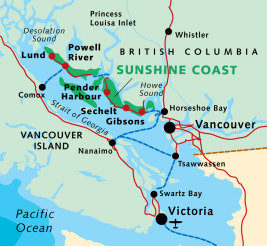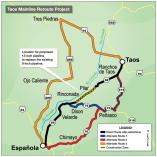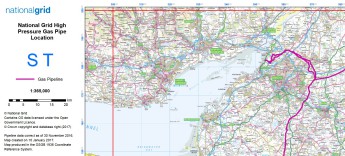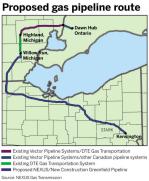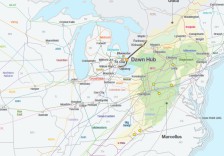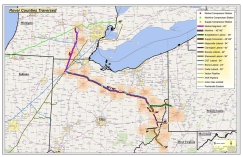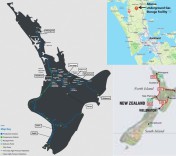
The World Hum
"Out of Sight is out of mind" - When you consider the number of pipelines around the world and the amount of mechanical horsepower required to move billions of cubic meters of product , it is easy to
understand how they can create low frequency noise over a vast area. Oddly enough, most of the Stories and discussions about Hums heard around the world make no mention of the possibilty that natural
gas pipelines and compressors make noise and fail to make the connection to the "The World Hum" .
Prince Edward Island, which has no Gas Pipelines or processing facilities has zero accounts of the The Hum in the
Database
Provincial
and Territorial Energy Profiles – Prince Edward Island
https://www.cer-rec.gc.ca/en/data-analysis/energy-markets/provincial-territorial-energy-profiles/provincial-territorial-energy-profiles-prince-edward-island.html
Cavendish Farms is the biggest user of NG in the Province but it is trucked in.
Cavendish Farms now fuelled by natural gas - The Guardian - Updated: Sep 30,
2017 at 2:41 a.m.
https://www.theguardian.pe.ca/news/local/cavendish-farms-now-fuelled-by-natural-gas-95195/
Prince Edward Island, which has no Gas Pipelines or processing facilities has zero accounts of the The Hum in the Database
The Vancouver Hum
Mysterious ‘Hum’ Harasses Vancouver Residents
By Mark Stevenson - CTV Environment Reporter - 10-6-2002
Vancouver is surrounded by high pressure natural gas pipelines and compressors.
Gibsons is where McPherson first heard the Hum and began a decade long investigation that has yet to yield any conclusion. McPherson inexplicably makes no mention of the possiblity that natural
gas pipelines.
The Taos Hum – Can Drive People Crazy
The Taos Hum is perhaps the most famous of the “Hum Phenomenon” that is experienced in various locations around the world.
Imperidox.Com - April 22, 2021
A summary of Infrastructure updates by the New Mexico Gas Company -Click Here
Seabank Power Station and Abson Compressor Station are both within 15 Kilometers of Bristol and yet they seemed to have escaped any attention in the search for the Bristol Hum.
Video - The Bristol Hum 11, 2020 - https://www.youtube.com/watch?v=gEdR5M5fFUA
Totterdown is an inner-suburb of Bristol, England, situated just south of the River Avon and to the south-east of Temple Meads railway station and the city centre.
Seabank Power Station is a 1,140 MW gas-fired power station at Hallen Marsh in Bristol, England. It is situated beside the A403 road and
Severn Estuary, just north of Avonmouth and south of Severn Beach, close to the boundary with South Gloucestershire. It is next to the former Terra Nitrogen Severnside fertiliser works, which was
closed by Growhow UK in January 2008.
The £435 million plant is run as Seabank Power Ltd. The initial partners in the company were BG Group (former part of British Gas) and Scottish and Southern Energy (SSE), however in 2010 BG Group, as
part of its reorganisation sold its 50% share of the plant to Cheung Kong Infrastructure Holdings Limited The company is now owned by Cheung Kong Infrastructure Holdings Limited, and SSE.
It was built by Siemens Power Generation and initially opened in 2000. It was built in two parts, with Seabank 1 (755 MW) started in January 1996 and completed in March 2000. Seabank 2 (385 MW) was
started in January 1999 and was completed in January 2001. The station has a number of step up transformers that allow connection to the National Grid high voltage electricity transmission system via
the Seabank 400 kV GIS substation. The power plant provides enough electricity for approximately 1.6 million people.
Seabank is a Combined cycle gas turbine (CCGT) type power station that runs on natural gas. The Gas is supplied to the station via the company's own 74-bar 42-inch (1,100 mm) pipeline that runs from
a gas compressor station near Abson in Pucklechurch, Bristol through South Gloucestershire to the station. The station can also utilise the local gas connection, that was used to connect the previous
Seabank Naptha/Gas Cracking station that occupied the site prior to the power station. The section first built consists of two massive V94.3A gas turbines with two heat recovery steam generators
(HRSG) and a steam turbine. The next built section consists of one V94.3A gas turbine, an HRSG and a steam turbine. It has a 55% thermal efficiency.
The Windsor Hum - One of the more famous cases of a mysterious Hum starts in Windsor, Ontario, Canada.
One of the better acountings of the Windsor Hum comes from the Sun UK
https://www.thesun.co.uk/news/5622622/canada-town-windsor-hum-ontario-noise-residents/
Considering the number of pipelines, compressors and natural gas related infrastructure in this area it is hard to understand why there is no mention of their being a possible source of the
Hum.
Dawn Storage Hub - The Dawn Storage Hub is located in southwestern Ontario It is Canada's largest integrated storage Hub
for natural Gas.
With multiple supply routes from western Canada, mid-continent, the Rockies, and the Gulf of Mexico, Dawn Hub has the ability to serve markets in the mid-west, eastern Canada and the U.S. Northeast.
Dawn Storage utilizes depleted natural gas reservoirs which are naturally occurring underground storage facilities 500-700 metres underground which contain sponge-like porous rock. Dawn began
injecting natural gas into a depleted reservoir at Dawn. On Oct. 28, 1942. Natural gas from Alberta has beens flowing into Dawn since 1960.
The Rover Pipeline is a 713-mile pipeline which transports up to 3.25 billion cubic feet per day of domestically produced natural gas from the rapidly expanding Marcellus and Utica Shale production areas to markets across the U.S. as well as into the Union Gas Dawn Storage Hub in Ontario, Canada, for redistribution back into the U.S. or into the Canadian market. The Rover Pipeline was declared in service to Vector/ Dawn Storage facility in May of 2018
Auckland New Zealand - Residents of Auckland have also been reporting a strange Hum. It's not surprising that New
Zealand is another Nation who sees the developement of fossil fuel production as a step towards environemental sustainability. Undoubtedly New Zealand's Government will also be catering to big oil
and adhering to the Profit > People and the Environment policy.
"Natural gas makes a substantial contribution to New Zealand’s energy supplies, providing energy security and supporting the New Zealand economy in a way that
helps to achieve the country’s environmental sustainability goals."
The Document below contains a detailed description of exactly how much consideration the Oil and Gas Industry has given to the potential for Pipelines and Compressors to generate low frequency noise and Infrasound.
The Hum is a detailed explanation of how an entire Industry failed to address the issue of low frequency noise and infra sound in the design of Pipeline Compressors and Equipment.
TheHum.pdf
Adobe Acrobat document [2.0 MB]
This PDF clearly illustrates that the Industry at large is well aware that ILFN is a common byproduct of their operations.
Natural Gas Compressor Station Noise.pdf
Adobe Acrobat document [1.5 MB]
For more on the Hum please visit my other Sites
www.therealworldhum.com
and
www.therealworldhum.ca

